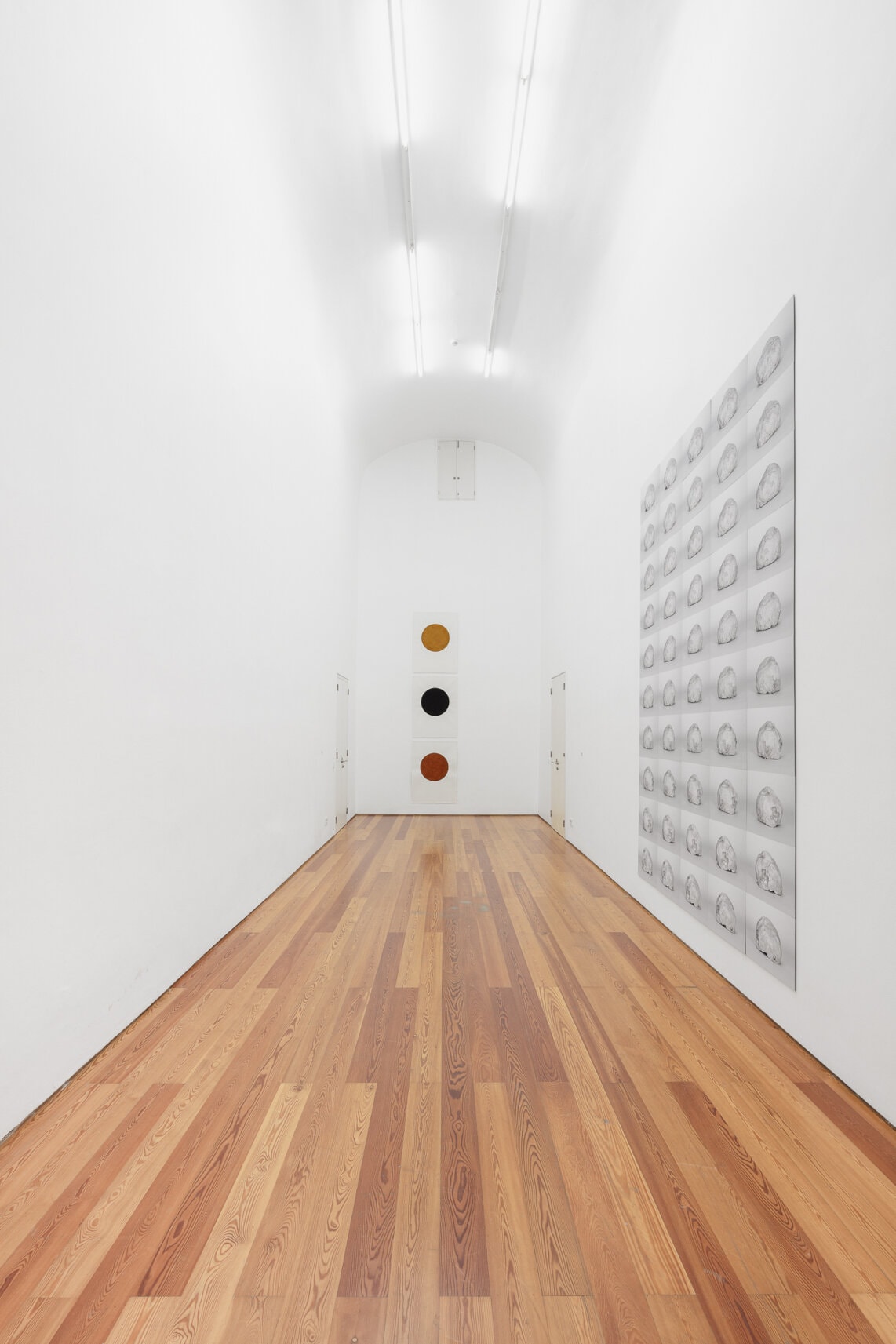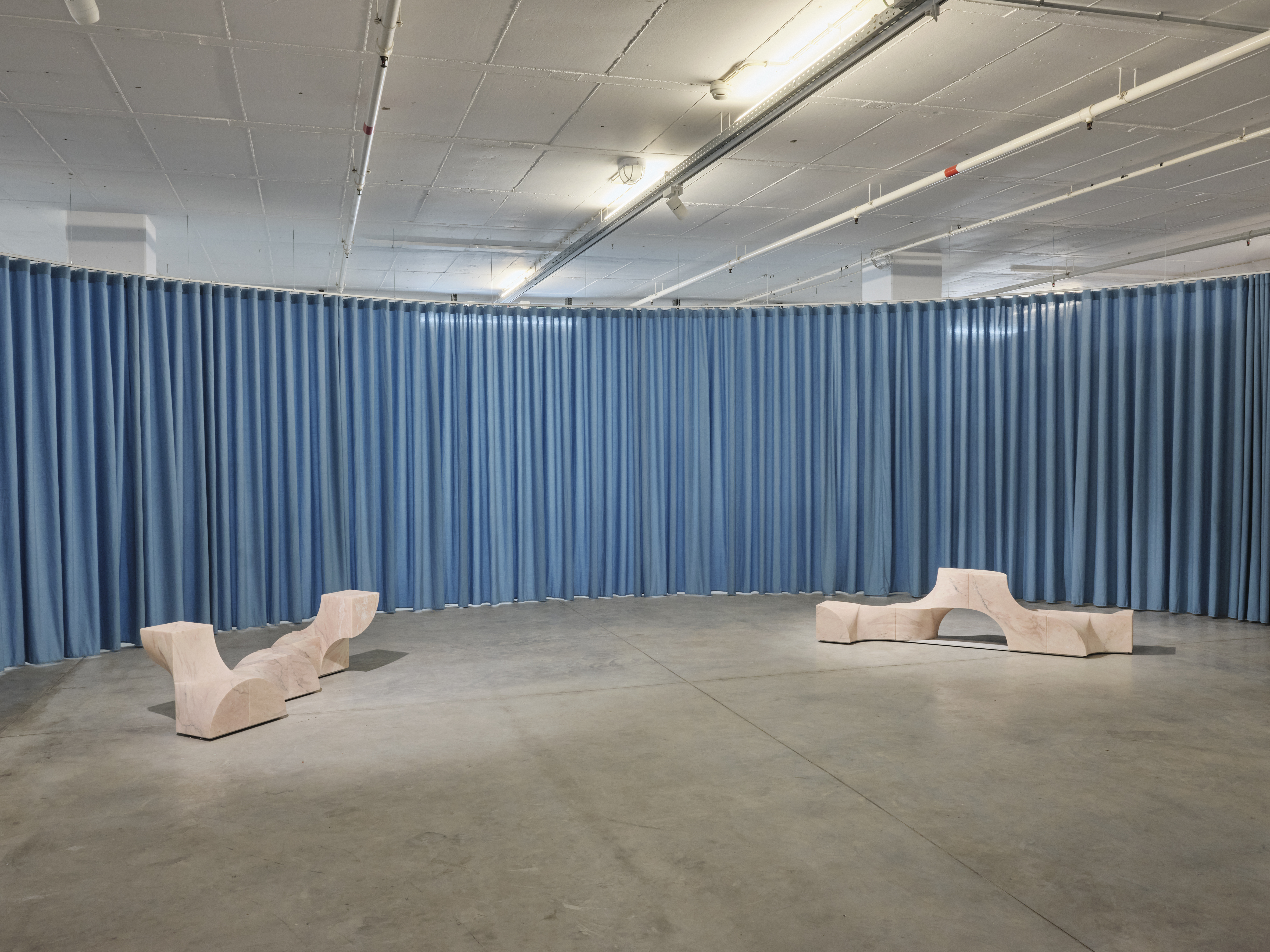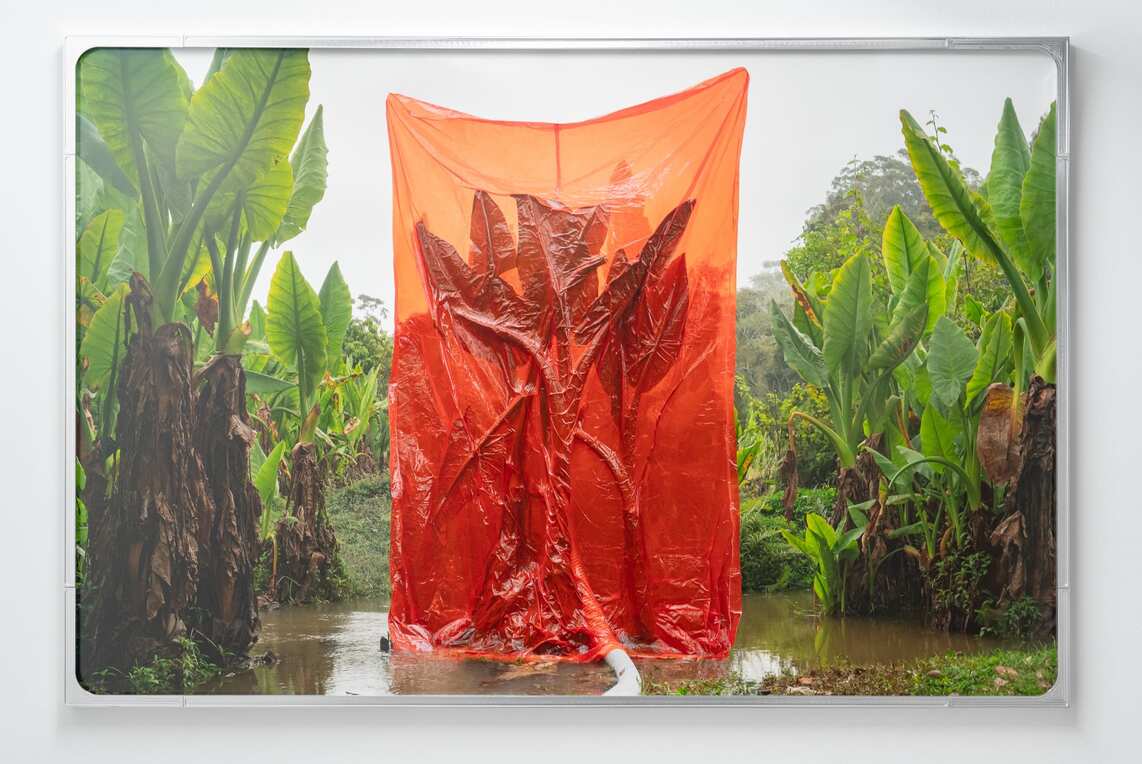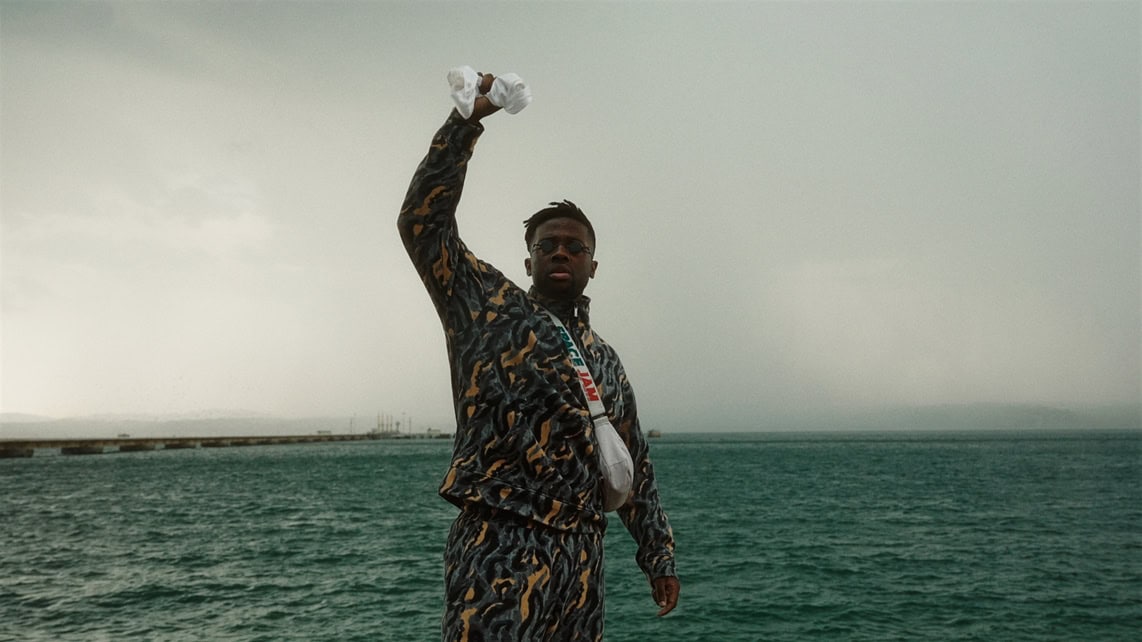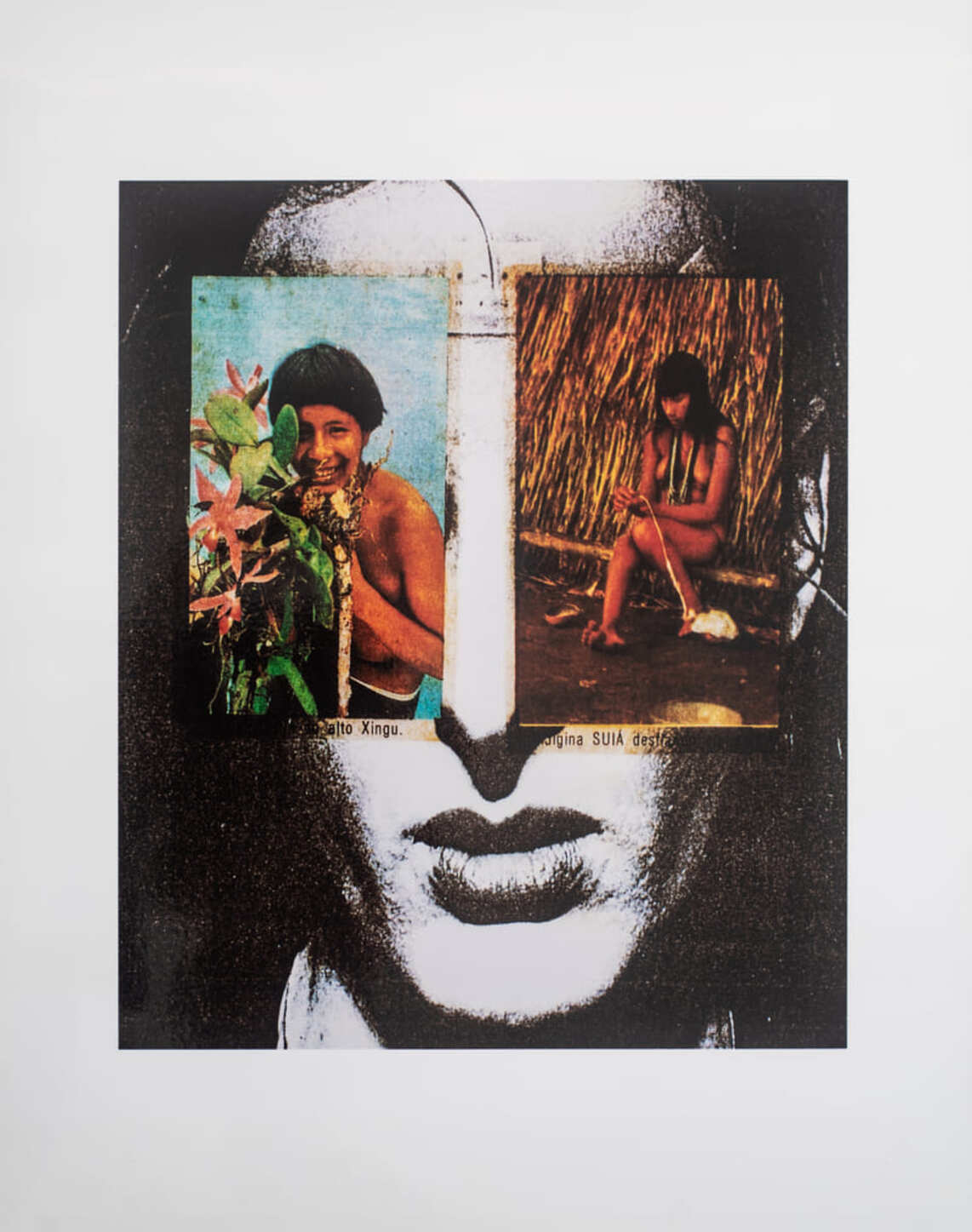I am tempted by any text or artwork with the word “body” in it. I can’t help it: if I find it in the title, I will read, I will attend, I will notice. In hindsight, I can almost identify the beginning of this addiction, that first cigarette puff that makes one cough and wonder why they like it so much: that was the experience I had when I saw live the work HOMEM = CARNE / MULHER = CARNE – Dopada by Brazilian artist Laura Lima, where a woman sleeps motionless on the floor of a white gallery, connected by a kind of red crochet tube – a sort of umbilical cord – to one wall. The exhibition text described the sedated performer as a “sculptural mass”, but I remember feeling such a unique energy and presence that I thought only a living body, turned into an art object, could provoke such eeriness. Note to the reader: I need another puff – I have to write a few more introductory lines for this piece.
I should clarify that years of curiosity have not brought me closer to any conclusions. I completed a Master’s degree with a dissertation on touch in the present and future and, I must confess, I still dodge the dilemmas of the body: what is it? What can it be? What is its opposite? The truth is that, among all the readings made, the “brief genealogies” and the paths opened without destination, the most constant idea in this journey – and which somehow also comforted my frustrated attempts to reach a conceptual resolution – was that the “body” is the leftover term, both vague and futile: “[…] the word without a job by excellence. The extra word in any language” [1], says Jean-Luc Nancy (who was and is a great companion in this addictive and unfinished journey in pursuit of the body). For this reason, Danilo Patzdorf – a little-known Brazilian dancer-thinker, but no less unsettling for that -, while recognising his own temerity, states: “the word body does not describe anything” [2].
An exhibition entitled Todo o corpo é político (The whole body is political) obviously intrigued me. I was immediately keen to visit the curatorial project of the NOVA FCSH Postgraduate Programme in Art Curatorship, at Sociedade Nacional de Belas Artes. What purposes had they found for such a worn-out definition? How did they construct a narrative about a word in which so much fits and, at the same time, nothing does? The trap is implicit. After all, what work of art does not ultimately reveal a reflection on the body, its position, movement and relationships? These queries follow me before, after and always, as I discover the works of a group of almost entirely Portuguese creators – with the exception of the Japanese artist and fashion designer Kosuke Tsumura -, household names in the national context: Adriana Proganó, Fernão Cruz, Inês Brites, Jaime Welsh, Mané Pacheco, Patrícia Garrido, Sara & André, Tiago Baptista and Vasco Araújo.
With a parallel programme consisting of workshops, guided tours and talks, the show has three thematic cores: the first “about the body as property; the second about the body as individual identity; and the third about its relationship with the community” [3]. These boundaries are almost impossible to distinguish – the body is as much a political problem as it is a philosophical, psychoanalytical, semiotic, ecological, and, of course, aesthetic one. “Letting out a fart in public, yawning in front of the president, dancing in the cemetery or shopping in the mall: are these examples of an aesthetic experience?”, asks Patzdorf [4], or are they examples of political, social, communal practice? Are Sara & André’s 3×4 photographs, for example, a commentary on a bureaucratic system in a Society of Transparency, an exercise in pushing the boundaries of what we believe to be our social identity or, on the other hand, an attempt at self-recognition in an image that never looks that good (the artist duo in question seems to be the exception to the rule)?
In fact, this always obscure nature of the body leads us to fragmentary analyses, sometimes narrow, sometimes ambiguous – as Eduardo Galeano said: “The Church says: the body is a sin. Science says: the body is a machine. Advertising says: The body is a business. The Body says: I am a fiesta” [5]. Similarly, the works chosen to discuss the body (pardon my repetition, it is such a difficult concept to replace!) and freedom can only do so through incomplete metonymies, but fertile in their proposals. This is the case of the body whose vertebrae are transformed into ammunition belts and fibre-optic cables, revealing a structurally violent, rigid and mobile column, in an expansive and overwhelming movement, requiring the opposite – pause, internalisation (UNPRECEDENTED TIMES CREATURES (ANTHROPAUSE), 2020, Mané Pacheco). Or the body as its contour, its sinuous and porous (non-)boundaries, revealing the arbitrariness of what we recognise as my extremity, my “home”, my “temple” – the anthropocentric promise of the sovereignty and omnipotence of the Self (Me, Me, Me, Me, 2020, Adriana Proganó). From being everything to being nothing, the body can also be fragile and transient flesh, ego-less, a simple “sculptural mass” trapped in immense darkness, in infinite time – in the word “body”, the word Ninguém (Nobody) (2019, Tiago Baptista) also (or above all) fits.
Interestingly, I realise that, unlike what I initially deduced from Laura Lima’s work, it is possible to conceive an exhibition on the body entirely without its physical and human presence. After all, where is a body made? When is a body made? Why (still) make a body?!
And the addiction lives on…
Todo o corpo é político is at Sociedade Nacional de Belas Artes, in Lisbon, until September 2.
[1] Nancy, Jean-Luc Nancy. (2000). Corpus. (Tomás Maia, Trans.) Lisbon: Passagens, p. 21. Author’s emphasis added.
[2] Patzdorf, Danilo. (2019). Sobre aquilo que um dia chamaram corpo – Corporalidade nas ambiências digitais. Belo Horizonte: Letramento, p. 44. Author’s emphasis added.
[3] Exhibition text.
[4] Patzdorf, Danilo. “Apêndices para os estudos do corpo e do sexo”. In: Nhamandu, Sue (Org.). Grelo duro: faca na bota. São Paulo: Ed. Córrego, 2018, pp. 290-317.
[5] Poem “Janela sobre o corpo” by Uruguayan journalist and writer Eduardo Galeano.

